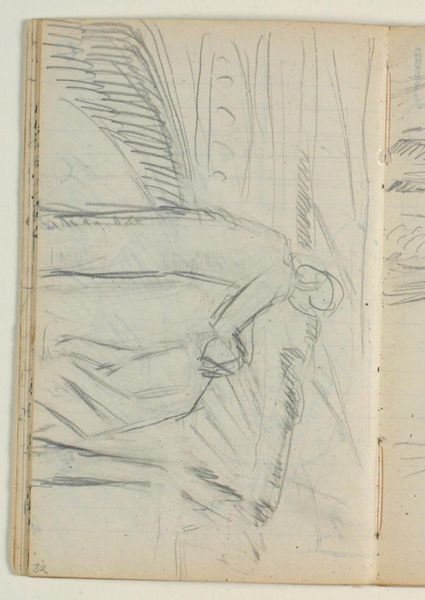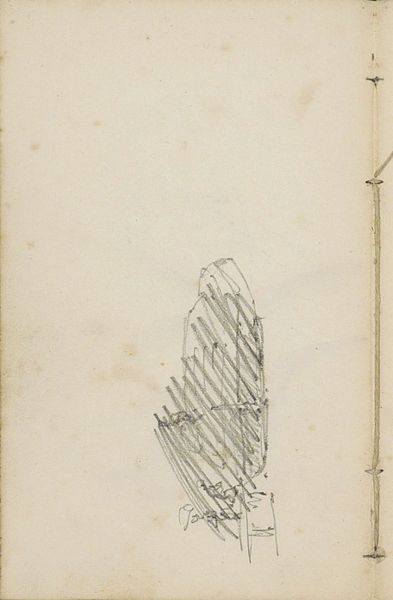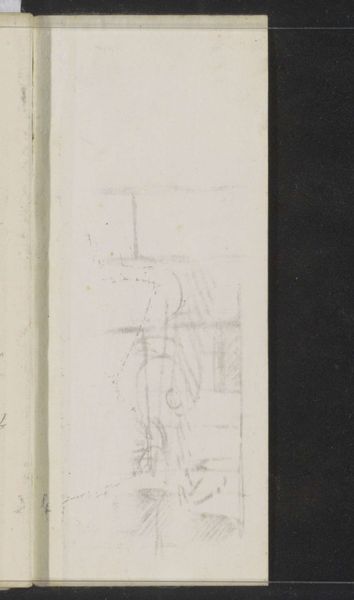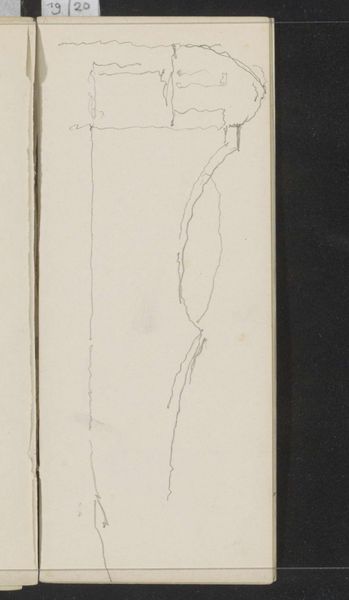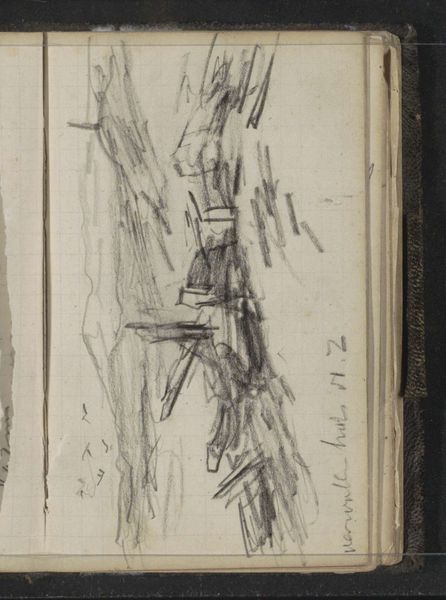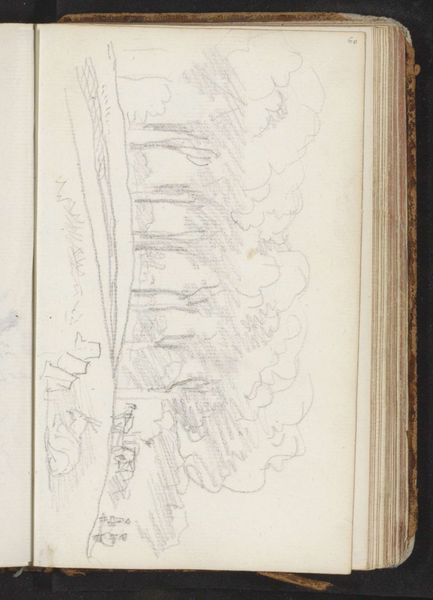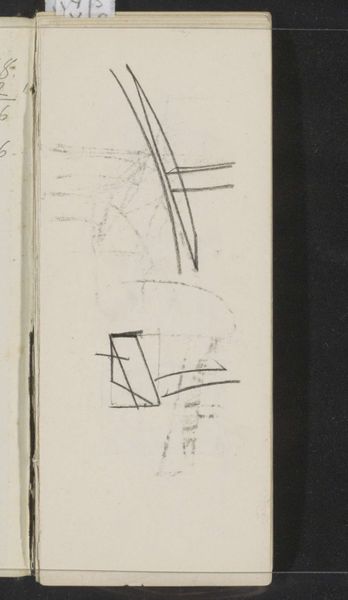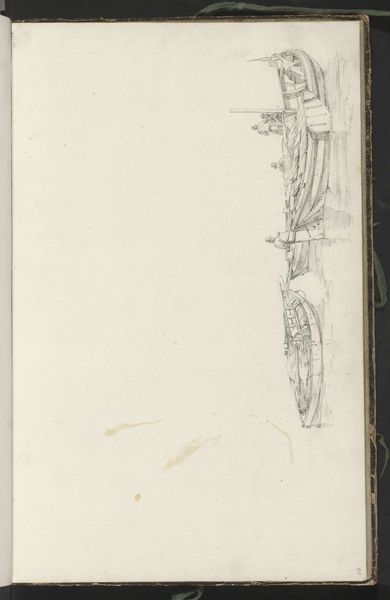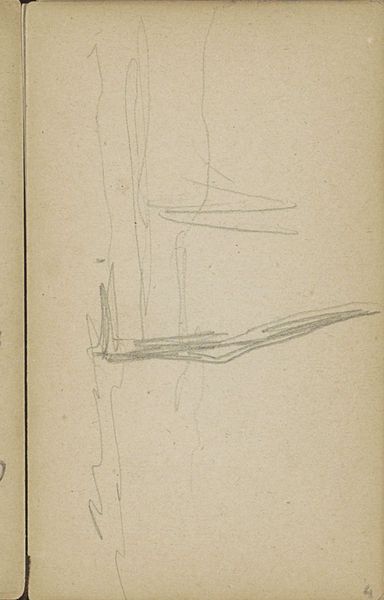
drawing, pencil, graphite
#
drawing
#
figuration
#
form
#
pencil
#
graphite
Editor: Here we have Niels Larsen Stevns’ “Figurskitser,” made between 1932 and 1935 using pencil and graphite. The sketches are quite faint, and they remind me of early studies of the human figure in motion, like those of Leonardo da Vinci, yet in the form of modernist abstraction. What strikes you about this piece? Curator: What captivates me is the way the artist manipulates line and form to suggest movement, eschewing realistic representation. Notice how the seemingly haphazard strokes of the pencil in the three suggested figures are creating structure without reliance on representational detail. It allows for the appreciation of form in its most rudimentary stage. Editor: So, you're saying that the lack of detail is actually a strength? I initially found it a bit hard to decipher. Curator: Precisely. Consider the density and directionality of the hatching. Observe, for example, that these lines not only describe the figures but create a sense of volume. The very emptiness becomes integral, an invitation for the eye to complete the forms. We could interpret this strategy as a challenge of classical assumptions about depth, shape and contours, don’t you agree? Editor: That's an interesting point! I hadn't thought of it that way, but focusing on the technique makes the image come alive more clearly. Are we ascribing value based purely on what’s visually present in the sketch itself and how it has been executed? Curator: Indeed. We can analyse Stevns’ work by considering line, tone, and the materiality of the medium. This methodology allows one to look beyond iconographic and contextual approaches, giving way to the formal properties of this graphite drawing, such as shape, texture and balance. Editor: I see! I feel I now have a richer perspective on the artist's choices. I learned a lot by thinking of pure form! Curator: As have I, the sketch unveils layers when the visual elements take the foreground.
Comments
No comments
Be the first to comment and join the conversation on the ultimate creative platform.

